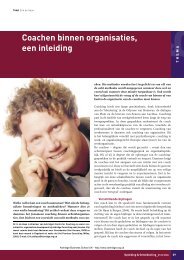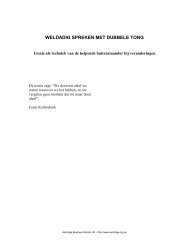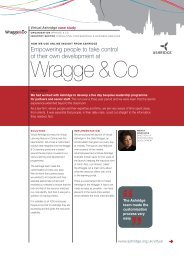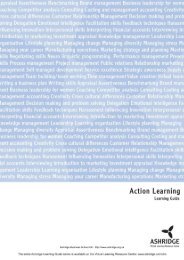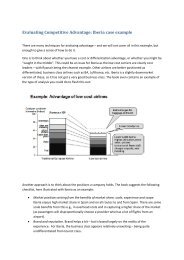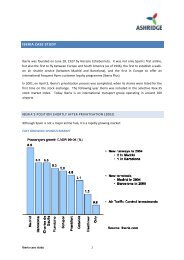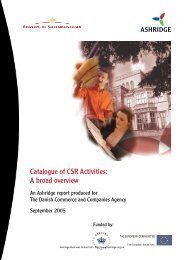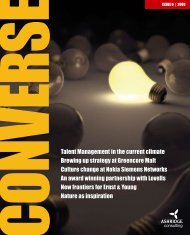“Dialogue – possible between leader and follower?” - Ashridge
“Dialogue – possible between leader and follower?” - Ashridge
“Dialogue – possible between leader and follower?” - Ashridge
Create successful ePaper yourself
Turn your PDF publications into a flip-book with our unique Google optimized e-Paper software.
his ideas are lived in practice in the minds of <strong>leader</strong>s; whether, even though they<br />
may not be familiar with Buber himself, they experientially underst<strong>and</strong> <strong>and</strong><br />
appreciate what he was saying.<br />
Below I now examine the literature on relational <strong>leader</strong>ship. I am interested in<br />
whether this burgeoning field mentions Buber’s work or alternatively, explores<br />
more generally the experience of dialogue <strong>between</strong> <strong>leader</strong> <strong>and</strong> <strong>follower</strong>. Surely if<br />
any part of the huge domain of <strong>leader</strong>ship literature would explore this it would<br />
be relational <strong>leader</strong>ship given the essentially relational nature of dialogue <strong>and</strong><br />
Buber’s focus on the ‘in <strong>between</strong>’.<br />
c. Relational <strong>leader</strong>ship<br />
Relational <strong>leader</strong>ship shares with dialogue the difficulty in confining itself to a<br />
definition which accomplishes wide agreement. Uhl-Bien (2006:654) paves the<br />
way for clarification in her Leadership Quarterly article which outlines two main<br />
perspectives of relational <strong>leader</strong>ship: an entity approach “that focuses on<br />
identifying attributes of individuals as they engage in interpersonal<br />
relationships<strong>”</strong>, <strong>and</strong> a relational perspective “that views <strong>leader</strong>ship as a process of<br />
social construction through which certain underst<strong>and</strong>ings of <strong>leader</strong>ship come<br />
about <strong>and</strong> are given privileged ontology<strong>”</strong>. Relational Leadership Theory (RLT) is<br />
then offered by Uhl-Bien as “an overarching framework for the study of<br />
<strong>leader</strong>ship as a social influence process through which emergent<br />
coordination….<strong>and</strong> change…are constructed <strong>and</strong> produced<strong>”</strong> (2006:654).<br />
In other words, according to Uhl-Bien, who builds on the work of Dachler <strong>and</strong><br />
Hosking (Dachler <strong>and</strong> Hosking, 1995; Hosking, 1988, 2007), the <strong>leader</strong>ship<br />
literature domain can be divided into two. Firstly, there are those views that<br />
perceive <strong>leader</strong>s as possessing certain qualities with relationship as an exchange<br />
<strong>between</strong> such a person <strong>and</strong> an other, i.e. a <strong>follower</strong>. These views focus on the<br />
attributes of the <strong>leader</strong>, the <strong>follower</strong> <strong>and</strong> the relationship as ‘things’ that can be<br />
studied <strong>and</strong> to a certain extent objectified. Well known examples of this<br />
perspective are the <strong>leader</strong>-member exchange (LMX) theory, (for example Graen<br />
14



